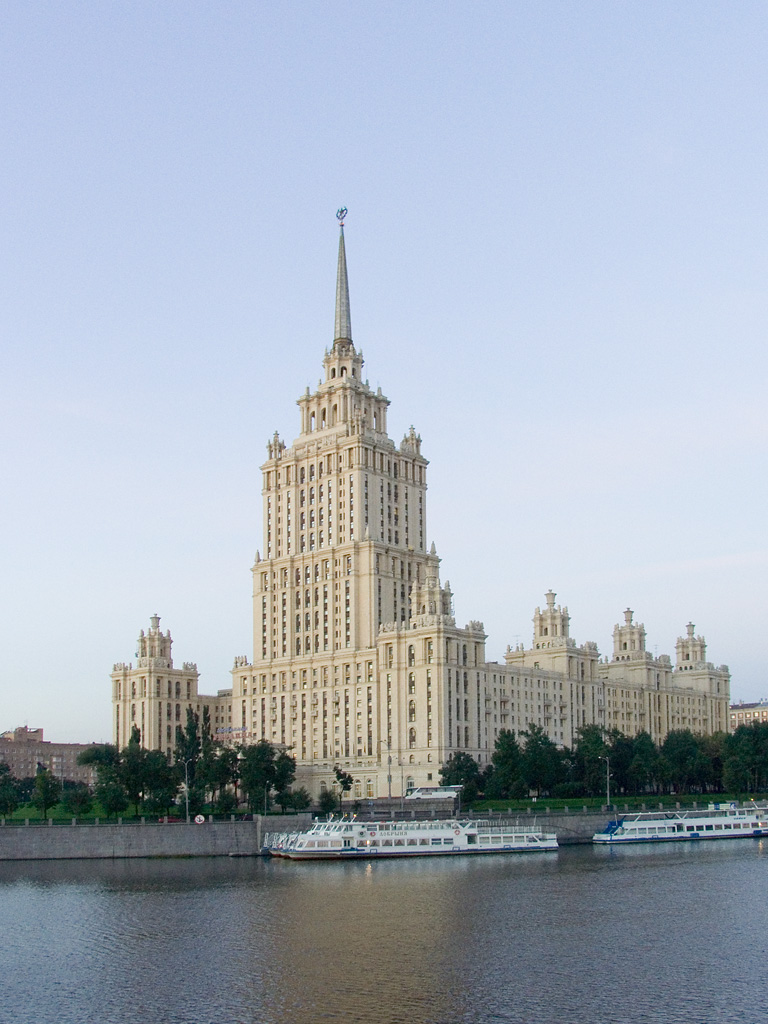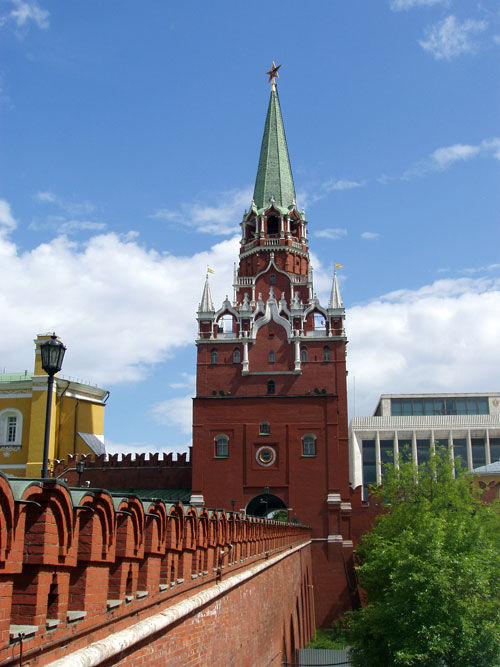|
Yakov Rubanchik
Yakov Osipovich Rubanchik (June 29, 1899 – December 20, 1948) was a Soviet Russian architect and artist. Biography Yakov Rubanchik was born into a photographer's family in the city of Taganrog in 1899. Studied at the Taganrog Boys Gymnasium. Graduated from Petrograd-based Vhutein (Higher Art and Technical Institute) in 1928. In summer of 1929 Rubanchik came to his home city Taganrog to make sketches of buildings in historical downtown. In early 1930s, Rubanchik was part of the Leningrad-based ASNOVA (Russian: АСНОВА; abbreviation for Ассоциация новых архитекторов, "Association of New Architects"), an Avant-Garde architectural association in the Soviet Union, which was active in the 1920s and early 1930s, commonly called 'the Rationalists'. Designed several projects of factory-kitchen A Factory-kitchen or kitchen factory (russian: Фабрика-кухня) was a large mechanized enterprise of food service in the Soviet Union, originat ... [...More Info...] [...Related Items...] OR: [Wikipedia] [Google] [Baidu] |
Taganrog
Taganrog ( rus, Таганрог, p=təɡɐnˈrok) is a port city in Rostov Oblast, Russia, on the north shore of the Taganrog Bay in the Sea of Azov, several kilometers west of the mouth of the Don River. Population: History of Taganrog The history of the city goes back to the late Bronze Age–early Iron Age (between the 20th and 10th centuries BC), when it was the earliest Greek settlement in the northwestern Black Sea Region and was mentioned by the Greek historian Herodotus as Emporion Kremnoi. In the 13th century, Pisan merchants founded a colony, Portus Pisanus, which was however short-lived. Taganrog was founded by Peter the Great on 12 September 1698. The first Russian Navy base, it hosted the Azov Flotilla of Catherine the Great (1770–1783), which subsequently became the Russian Black Sea Fleet. Taganrog was granted city status in 1775. By the end of the 18th century, Taganrog had lost its importance as a military base after Crimea and the entire Sea of Azov w ... [...More Info...] [...Related Items...] OR: [Wikipedia] [Google] [Baidu] |
Leningrad
Saint Petersburg ( rus, links=no, Санкт-Петербург, a=Ru-Sankt Peterburg Leningrad Petrograd Piter.ogg, r=Sankt-Peterburg, p=ˈsankt pʲɪtʲɪrˈburk), formerly known as Petrograd (1914–1924) and later Leningrad (1924–1991), is the second-largest city in Russia. It is situated on the Neva River, at the head of the Gulf of Finland on the Baltic Sea, with a population of roughly 5.4 million residents. Saint Petersburg is the fourth-most populous city in Europe after Istanbul, Moscow and London, the most populous city on the Baltic Sea, and the world's northernmost city of more than 1 million residents. As Russia's Imperial capital, and a historically strategic port, it is governed as a federal city. The city was founded by Tsar Peter the Great on 27 May 1703 on the site of a captured Swedish fortress, and was named after apostle Saint Peter. In Russia, Saint Petersburg is historically and culturally associated with ... [...More Info...] [...Related Items...] OR: [Wikipedia] [Google] [Baidu] |
Chekhov Gymnasium
The Chekhov Gymnasium in Taganrog on Ulitsa Oktyabrskaya 9 (formerly Gymnasicheskaya Street) is the oldest gymnasium in the South of Russia. Playwright and short-story writer Anton Chekhov spent 11 years in the school, which was later named after him and transformed into a literary museum. Visitors can see Anton's desk and his classroom, the assembly hall and even the punishment cell which he sometimes visited. History of the school The Boys Gymnasium was founded in 1809 and this building was completed in 1843 by the plans of the Italian architect Francesco Boffo. Students of the Boys Gymnasium benefited from various grants, most of them being introduced by the Greek-Russian merchant and benefactor Ioannis Varvakis (1745–1825). In mid-1870s a school church was made in the same building, and the cross may be seen on some old postcards. After the Russian Revolution of 1917 and the following Civil War, the building housed a cavalry school (''6th Cavalry College''), frequ ... [...More Info...] [...Related Items...] OR: [Wikipedia] [Google] [Baidu] |
Avant-Garde
The avant-garde (; In 'advance guard' or ' vanguard', literally 'fore-guard') is a person or work that is experimental, radical, or unorthodox with respect to art, culture, or society.John Picchione, The New Avant-garde in Italy: Theoretical Debate and Poetic Practices' (Toronto: University of Toronto Press, 2004), p. 64 . It is frequently characterized by aesthetic innovation and initial unacceptability.Kostelanetz, Richard, ''A Dictionary of the Avant-Gardes'', Routledge, May 13, 2013 The avant-garde pushes the boundaries of what is accepted as the norm or the '' [...More Info...] [...Related Items...] OR: [Wikipedia] [Google] [Baidu] |
Factory-kitchen
A Factory-kitchen or kitchen factory (russian: Фабрика-кухня) was a large mechanized enterprise of food service in the Soviet Union, originated in the 1920–1930s. Its main purpose was centralized preparation of food (both prefabrication and full processing) supplied for communal dining rooms or for personal purchase. Factory-kitchens were characteristic of their unique architecture. Sometimes the term is inadequately translated as communal kitchen, the latter being a kitchen in a Soviet communal apartment. The idea of centralized food preparation was part of the emancipation of the women from the household work in early Soviet Union, and to better tap into women's workforce. Along with the house-communes, factory-kitchens were to get rid of "the yoke of the household economy". Slogans of the day were "Away with Pots and Pans!" and "The Saucepan is an Enemy of the party cell, Party Cell".Richard Stites, ''The Women's Liberation Movement in Russia: Feminism, Nihilism, ... [...More Info...] [...Related Items...] OR: [Wikipedia] [Google] [Baidu] |
Stalinist Architecture
Stalinist architecture, mostly known in the former Eastern Bloc as Stalinist style () or Socialist Classicism, is the architecture of the Soviet Union under the leadership of Joseph Stalin, between 1933 (when Boris Iofan's draft for the Palace of the Soviets was officially approved) and 1955 (when Nikita Khrushchev condemned "excesses" of the past decades and disbanded the Soviet Academy of Architecture). Stalinist architecture is associated with the Socialist realism school of art and architecture. Features As part of the Soviet policy of rationalization of the country, all cities were built to a general development plan. Each was divided into districts, with allotments based on the city's geography. Projects would be designed for whole districts, visibly transforming a city's architectural image. The interaction of the state with the architects would prove to be one of the features of this time. The same building could be declared a formalist blasphemy and then receive the ... [...More Info...] [...Related Items...] OR: [Wikipedia] [Google] [Baidu] |
Gary Berkovich
Gary Berkovich, AIA, NCARB (born May 26, 1935, in Kharkiv, Ukrainian SSR, Soviet Union) is an American and Soviet architect, and the first Soviet architect of 1960s – 1980s immigration wave, who had opened his office (Gary A. Berkovich Associates, 1987) in the United States. Author of about 200 projects of residential and public buildings in the USSR and in the USA. He is a winner of the architectural competitions in the Soviet Union and in the United States. He is also an author of books and professional articles. Biography Gary Berkovich was born to a Jewish family in Ukraine. He had graduated from the Kharkiv Building Technical School (1953) and the Moscow School of Architecture (1964), both with honours. In 1973, he got a PhD from Moscow Housing Design and Research Institute for his thesis, dedicated to the computerization of architectural design ("The problems of an apartment layout optimization solutions»). He worked in architectural firms of Kharkiv, Nov ... [...More Info...] [...Related Items...] OR: [Wikipedia] [Google] [Baidu] |
Soviet Architects
This is a list of architects of the Russian Federation, Soviet Union, Russian Empire, Tsardom of Russia and Grand Duchy of Moscow, both ethnic Russians and people of other ethnicities. This list also includes those who were born in the ///Tsardom of Russia/Grand Duchy of Moscow but later emigrated, and those who were born elsewhere but immigrated to the country and/or worked there for a significant period of time. Attested biographies of architects in Russian history date back to 1475, when Aristotile Fioravanti, a native of Bologna, arrived in Moscow to build the Dormition Cathedral of the Moscow Kremlin. Foreign architects had a notable place in Russian and Soviet history, especially in the last quarter of the 18th century ( Charles Cameron, Bartolomeo Rastrelli, Carlo Rossi and others) and in the first quarter of the 20th century ( Mies van der Roe, Erich Mendelsohn, Ernst May and others). This list includes foreign architects whose primary, and most tangible work materialize ... [...More Info...] [...Related Items...] OR: [Wikipedia] [Google] [Baidu] |
1899 Births
Events January 1899 * January 1 ** Spanish rule ends in Cuba, concluding 400 years of the Spanish Empire in the Americas. ** Queens and Staten Island become administratively part of New York City. * January 2 – **Bolivia sets up a customs office in Puerto Alonso, leading to the Brazilian settlers there to declare the Republic of Acre in a revolt against Bolivian authorities. **The first part of the Jakarta Kota–Anyer Kidul railway on the island of Java is opened between Batavia Zuid ( Jakarta Kota) and Tangerang. * January 3 – Hungarian Prime Minister Dezső Bánffy fights an inconclusive duel with his bitter enemy in parliament, Horánszky Nándor. * January 4 – **U.S. President William McKinley's declaration of December 21, 1898, proclaiming a policy of benevolent assimilation of the Philippines as a United States territory, is announced in Manila by the U.S. commander, General Elwell Otis, and angers independence activists who had fought against ... [...More Info...] [...Related Items...] OR: [Wikipedia] [Google] [Baidu] |





